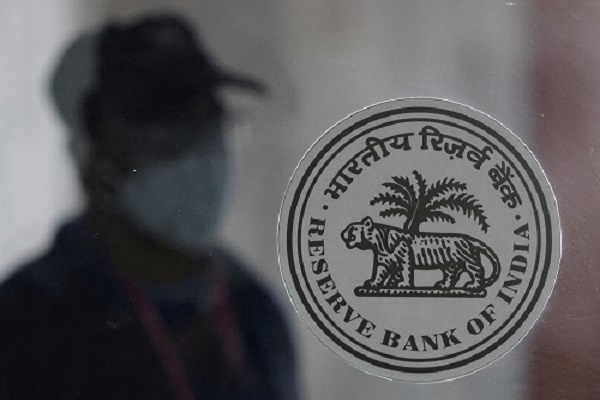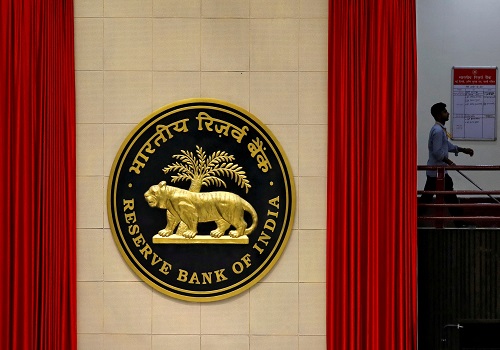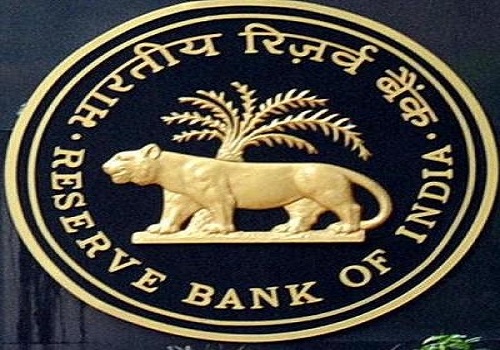Cottoncandy trading range for the day is 52980-53080 - Kedia Advisory

Gold
Gold prices declined by -1.05% to settle at 87,778, pressured by a stronger U.S. dollar and increased expectations that the Federal Reserve will hold interest rates steady in the near term. Fed Chair Jerome Powell's cautious stance, coupled with concerns over President Donald Trump’s tariff policies, led traders to price in about 63 basis points of rate cuts this year, according to LSEG data. Meanwhile, U.S. job data showed a slight rise in unemployment claims, suggesting a stable labor market. In India, gold demand slumped due to soaring prices, leading to discounts hitting an eight-month high — dealers offered discounts of up to $41 an ounce, compared to $39 last week. India's February gold imports reportedly plummeted by 85% year-on-year, marking a 20-year low. The World Gold Council (WGC) predicts India's gold consumption will moderate in 2025, falling to 700-800 metric tons from last year’s nine-year high of 802.8 tons. Jewellery demand, which constitutes 70% of India’s gold consumption, is expected to weaken, while investment demand in gold ETFs, digital gold, and bars is projected to stay strong. Globally, gold traded at varying premiums and discounts — China saw a discount of $2-$16 per ounce, Singapore had a premium of $1.80-$2.50, Hong Kong ranged from $0.50 to $2, and Japan ranged from a $1 premium to a $5.5 discount. Technically, gold remains under long liquidation, with open interest dropping by -12.62% to 10,846. Key support is at 87,245, with further downside to 86,710 if breached. Resistance stands at 88,395, and a breakout could push prices towards 89,010.
Trading Ideas:
* Gold trading range for the day is 86710-89010.
* Gold fell amid pressure from a stronger dollar on increased bets that U.S. interest rates will remain unchanged in the near-term.
* Fed indicated it was in no rush to cut interest rates further this year due to uncertainties around U.S. tariffs.
* Discounts offered on gold in India touched a more than eight-month high as demand slumped.
Silver
Silver prices dropped by -1.52% to settle at 97,884, pressured by a stronger U.S. dollar after Federal Reserve Chair Jerome Powell signaled no urgency for rate cuts despite acknowledging weakening economic growth and labor market concerns. The ongoing uncertainty surrounding President Donald Trump’s tariff policies added to the cautious sentiment. Additionally, China's unclear stimulus measures further dampened silver’s industrial demand outlook, contributing to the downward pressure. On the supply side, Comex inventories hit a record 403.2 million ounces as of February 27, reflecting a surge in stockpiles. Hecla Mining, the largest U.S. silver producer, reported a 13% rise in output for 2024, producing 16.2 million ounces — the second-highest production in its 134-year history. Global silver supply is projected to rise by 3% in 2025, reaching an 11-year high of 1.05 billion ounces, with mine production expected to hit a seven-year high of 844 million ounces. Despite higher supply, silver is expected to remain in a deficit for the fifth consecutive year, with a shortfall of 149 million ounces — down 19% from last year but still historically large. Industrial demand remains the key driver, projected to surpass 700 million ounces for the first time, fueled by green energy applications. Technically, the market remains under long liquidation, with open interest falling by -9.41% to 19,258. Support is seen at 97,020, with a break potentially testing 96,155. Resistance stands at 98,875, and a move above could push prices to 99,865.
Trading Ideas:
* Silver trading range for the day is 96155-99865.
* Silver fell as Fed’s Powell reaffirmed that the central bank is in no rush to cut interest rates further
* Fed’s Powell pointed to weakening economic growth and labor market concerns but maintained a cautious stance.
* Adding to pressure on silver, lingering economic concerns in China dampened its industrial demand outlook.
Crude Oil
Crude oil prices edged up by 0.05% to settle at 5900, supported by fresh U.S. sanctions on Iran and OPEC+ output plans hinting at tighter global supply. The U.S. Treasury's new sanctions notably targeted an independent Chinese refiner alongside other entities involved in importing Iranian crude, signaling tougher enforcement measures. Additionally, OPEC+ announced further production cuts from seven members — ranging between 189,000 to 435,000 barrels per day (bpd) monthly until June 2026 — to offset previous overproduction, reinforcing bullish sentiment. However, upside momentum remained limited due to record-high oil output from Kazakhstan, which surpassed its OPEC+ production quotas, contributing to global supply pressure. Meanwhile, U.S. Energy Information Administration (EIA) data revealed a decline in U.S. commercial crude imports, dropping by 85,000 bpd to 5.4 million bpd — the lowest since March 2023 — alongside Canadian imports plunging to a two-year low of 3.1 million bpd. Despite this, U.S. crude inventories rose by 1.745 million barrels, exceeding market expectations of a 1.1 million barrel build, though stocks at the Cushing hub fell by 1.009 million barrels. The International Energy Agency (IEA) forecasts a global oil surplus of 600,000 bpd in 2025, with an additional 400,000 bpd surplus likely if OPEC+ fails to curb overproduction. Technically, the market remains under short covering, with open interest falling by -1.73% to 5179. Support is seen at 5857, with a break below testing 5813, while resistance stands at 5937, and a move above could push prices toward 5973.
Trading Ideas:
* Crudeoil trading range for the day is 5813-5973.
* Crudeoil gains driven by new U.S. sanctions on Iran and a fresh OPEC+ plan to cut output among seven members.
* However upside seen limited as Kazakhstan's oil output has reached a record high in March.
* A new OPEC+ plan announced for seven members to cut output raised bets on tighter supplies in the coming months.
Natural Gas
Natural gas prices edged down by -0.29% to settle at 344.2, driven by record production levels and forecasts of milder weather, which are expected to suppress heating demand through early April. This comes despite gas storage levels remaining 8% below seasonal norms after heavy winter withdrawals earlier this year, including record stockpile draws in January due to extreme cold. LSEG data shows average gas output in the Lower 48 U.S. states increased to 105.9 billion cubic feet per day (bcfd) in March, surpassing February’s record of 105.1 bcfd. Meanwhile, demand — including exports — is expected to climb from 106.8 bcfd this week to 108.0 bcfd next week, before dipping to 106.1 bcfd in two weeks. Notably, U.S. LNG feedgas hit a preliminary record high of 16.6 bcfd on Friday, highlighting robust export activity. In storage trends, U.S. utilities added 9 billion cubic feet of gas for the week ending March 14, 2025 — far exceeding market expectations of a 3 bcf build. This marked the first storage increase since November 2024. Storage levels remain 26.8% lower than the same period last year and 10% below the five-year average, keeping supply tight. Technically, the market is under long liquidation, with open interest falling by -3.71% to 12,522. Support is seen at 336, with a drop below potentially testing 327.9, while resistance stands at 350.2 — a break above could push prices toward 356.3.
Trading Ideas:
* Naturalgas trading range for the day is 327.9-356.3.
* Natural gas dropped on record output and forecasts for milder weather.
* US gas output on track to hit monthly record in March
* US LNG export feedgas set to hit monthly record in March
Copper
Copper prices declined by -0.92%, settling at 899.05, driven by a stronger U.S. dollar and heightened uncertainty around potential new tariffs on copper imports, initiated by U.S. President Donald Trump’s directive for a tariff probe. This uncertainty pushed the Comex premium over LME prices to a near-record high of $1,290 per ton, or 13%, reflecting strong U.S. demand despite global pressure. On the inventory side, LME on-warrant copper stocks dropped to 117,775 tons — the lowest since June — after 8,200 tons of fresh cancellations, with canceled stocks now making up 48% of total LME copper reserves. Meanwhile, Comex copper stocks have fallen 7.5% since mid-February to 93,154 tons, further tightening supply. In China, copper stocks surged toward 270,000 tons, triple the level from the start of the year, driven by rising domestic production. Refined copper output in China increased 3.7% year-on-year to 2.3 million metric tons for January and February, with daily production averaging 38,983 tons. The global refined copper market saw a 22,000 metric ton deficit in December, narrowing from a 124,000-ton deficit in November. For 2024 overall, the market shifted to a 301,000 metric ton surplus compared to a 52,000-ton deficit the prior year, according to the International Copper Study Group. Technically, copper is under long liquidation, with open interest plunging by -27.21% to 2,921. Support is seen at 893.8, with a break lower potentially testing 888.5, while resistance stands at 905.9, with a move above potentially reaching 912.7.
Trading Ideas:
* Copper trading range for the day is 888.5-912.7.
* Copper dropped amid stronger dollar and China's refined copper production in January and February rose 3.7%.
* The premium of the Comex contract over the LME one hit a record high of $1,346 per ton and was last at $1,290, or 13%.
* The on-warrant copper stocks in the LME system fell to 117,775 tons, the lowest since June, after 8,200 tons of fresh cancellations.
Zinc
Zinc prices edged up by 0.04%, settling at 275.45, supported by falling inventories and production cuts. Shanghai Futures Exchange (SHFE) zinc inventories dropped 6.9% from last Friday, while LME on-warrant stocks hit their lowest since November 2023 at 94,700 tons after 42,575 tons of fresh cancellations. Additionally, Nyrstar's announcement of a 25% production cut at its Hobart smelter in Australia from April fueled bullish sentiment, reflecting ongoing supply challenges due to unfavorable raw material market conditions and rising costs. China’s zinc production rose by 1.8% year-on-year in January and February to 1.13 million metric tons, though February production dipped 8% month-on-month due to fewer production days and maintenance shutdowns in key regions like Hunan, Gansu, and Yunnan. However, March output is expected to rebound by over 13% month-on-month and 4% year-on-year, driven by resumed operations, increased production days, and capacity expansions in Shaanxi and Qinghai. The global zinc market flipped to a deficit of 62,000 metric tons in 2024 from a surplus of 310,000 tons the previous year, according to the International Lead and Zinc Study Group (ILZSG), reflecting lower production in major regions like China, Japan, and South Korea. Technically, zinc is under short covering, with open interest falling by -18.49% to 1,252. Support is seen at 272.9, with a break below potentially testing 270.3, while resistance stands at 277.2, with a move above possibly reaching 278.9.
Trading Ideas:
* Zinc trading range for the day is 270.3-278.9.
* Zinc steadied as inventories in SHFE warehouses dropped 6.9% from last Friday
* China's January – February zinc output up 1.8%
* China’s zinc smelters are more willing to increase production.
Aluminium
Aluminium prices dropped by -2.26%, settling at 255.65, driven by improved raw material availability. Major alumina producers in Guinea, Australia, and China ramped up capacity to recover from last year’s disruptions, pushing alumina prices to near one-year lows and boosting processing rates at smelters. However, while raw material supply improved, finished aluminum output is expected to slow. China's record production of 44 million tons in 2024 faces limitations this year, with Beijing maintaining its production cap of 45 million tons to control oversupply and meet carbon emission goals. China’s aluminum output in February 2025 increased by 0.4% year-on-year but fell by 95,000 metric tons month-on-month, reflecting fewer production days and the recovery of previously curtailed capacity. January-February production rose 2.6% to 7.32 million metric tons, supported by improved profitability for smelters, driven by falling alumina prices and easing supply constraints, according to state-backed research firm Antaike. January's global primary aluminum output rose 2.7% year-on-year to 6.252 million tonnes, according to the International Aluminium Institute (IAI). Technically, the market is under long liquidation, with open interest plunging by -26.6% to 1,614. Aluminium now has support at 253.2, with a drop below potentially testing 250.8. Resistance stands at 259.9, and a move above could push prices to 264.2.
Trading Ideas:
* Aluminium trading range for the day is 250.8-264.2.
* Aluminium prices dropped amid the improved availability for raw materials.
* Major alumina producers in Guinea, Australia, and China added new capacity to recover from series of disruptions last year.
* Global aluminium output falls 0.9% year on year in February – IAI
Cottoncandy
Cottoncandy prices dipped by -0.58%, settling at 53,040, driven by increased supply and sluggish mill buying, as mills remain well-stocked and avoid immediate purchases. The Cotton Association of India (CAI) lowered its 2024-25 crop estimate by 2% to 295.30 lakh bales, citing weaker yields in central India. This marks a notable drop from last season’s 327.45 lakh bales, influenced by a 10% decline in cultivation area. The government’s second advance estimate further revised projections down to 294.25 lakh bales. Regionally, Gujarat and Maharashtra are set for reduced output by 4 lakh and 3 lakh bales respectively, while Odisha is forecasted to rise by 0.55 lakh bales. Imports are projected to surge to 32 lakh bales, more than double last season’s 15.2 lakh bales, with 22 lakh bales imported by February-end. Domestic consumption remains steady at 315 lakh bales, with 142 lakh bales consumed by February. Exports are predicted to fall 40% to 17 lakh bales from 28.36 lakh bales last year. Closing stocks are expected to drop to 23.49 lakh bales, down from 30.19 lakh bales. Globally, Brazil’s production is forecasted to rise 1.6% to 3.7616 million tons, with a 4.8% expansion in planting areas. The U.S. sees minor changes, with mill use down 100,000 bales and ending stocks increased accordingly. Technically, the market is under long liquidation, with open interest dropping by -10.07% to 134. Support is seen at 53,010, with a potential test at 52,980. Resistance stands at 53,060, with a break above possibly testing 53,080.
Trading Ideas:
* Cottoncandy trading range for the day is 52980-53080.
* Cotton dropped due to a substantial increase in supply and limited mill buying.
* Mills are well-stocked and are not facing immediate purchasing requirements.
* CAI has further reduced its 2024-25 crop estimate by 2 per cent to 295.30 lakh bales
* In Rajkot, a major spot market, the price ended at 25606.95 Rupees dropped by -0.3 percent.
Turmeric
Turmeric prices surged by 2.45% to settle at Rs.13,394, driven by lower-than-expected arrivals and strong buying interest. The bullish trend was supported by positive export performance, with shipments hitting a four-year high, surpassing 2020’s volume of 1.75 lakh tonnes. From April to December 2024, turmeric exports rose 13% to 1,36,921 tonnes compared to 1,21,170 tonnes during the same period in 2023. December alone saw a 46.94% YoY surge, reflecting sustained global demand. On the supply side, new crop yields are projected to be 10-15% lower, especially in the Nanded region, where small rhizomes and crop rots are reported. Despite a 10% increase in turmeric acreage to 3.3 lakh hectares, production may not rise proportionately due to untimely rains affecting productivity. Last year’s production stood at 10.75 lakh tonnes, and this season’s output is expected to either match that or fluctuate by 3-5%. Imports also rose sharply by 84.35% during April-December 2024 to 19,644 tonnes compared to 10,655 tonnes in the previous year. Technically, the market is in short covering mode, evidenced by a 3.04% drop in open interest to 11,015 contracts while prices climbed Rs.320. Immediate support is seen at Rs.13,186, with a potential test of Rs.12,978 if pressure builds. Resistance is anticipated at Rs.13,586, and a breakout could push prices toward Rs.13,778.
Trading Ideas:
* Turmeric trading range for the day is 12978-13778.
* Turmeric gained as lower-than-expected arrivals restricted supplies, leading to strong buying interest.
* Strong demand supported by positive export trends lifted prices in key trading hubs.
* Meanwhile, exports continued to pick up in the second half of 2024, with shipments reaching a four-year high.
* In Nizamabad, a major spot market, the price ended at 13334.15 Rupees gained by 2.59 percent.
Jeera
Jeera prices rose by 1.71% to settle at Rs.22,055, driven by strong domestic demand and export activity, particularly from Gulf countries. Supply constraints played a significant role in supporting prices, as arrivals from Rajasthan remained limited. Additionally, the new crop in Gujarat faced delays of about a month due to unfavorable weather, tightening near-term availability. Despite these bullish factors, the upside remains somewhat capped due to slower demand and sufficient carry-forward stocks. Farmers still hold approximately 20 lakh bags of jeera, with an estimated 3-4 lakh bags likely to be traded by the season’s end, leaving around 16 lakh bags as carry-forward stock. On the production front, India’s cumin seed output improved significantly to 8.6 lakh tonnes from 11.87 lakh hectares in 2023-24, compared to 5.77 lakh tonnes from 9.37 lakh hectares the previous year, according to Spices Board data. India remains the most competitive source for cumin globally, priced at $3,050 per tonne — notably cheaper than Chinese cumin, which commands a $200-$250 premium. Exports surged by 70.72% during April-December 2024, reaching 1,65,084 tonnes compared to 96,701 tonnes in the same period of 2023. December alone saw a remarkable 56.45% jump over November. Technically, the market entered fresh buying mode with a 1.2% increase in open interest to 3,552 contracts. Jeera has immediate support at Rs.21,830, with further downside potential to Rs.21,590. Resistance is now seen at Rs.22,250, and a breakout could push prices toward Rs.22,430.
Trading Ideas:
* Jeera trading range for the day is 21590-22430.
* Jeera gained amid price support from domestic demand, as well as export activity from Gulf countries.
* Supply trends remain crucial, as near-term supplies remain tight due to limited arrivals from Rajasthan.
* The start of the new crop of cumin in Gujarat has been delayed by about a month.
* In Unjha, a major spot market, the price ended at 21944.4 Rupees dropped by -0.12 percent.
Views express by all participants are for information & academic purpose only. Kindly read disclaimer before referring below views
























